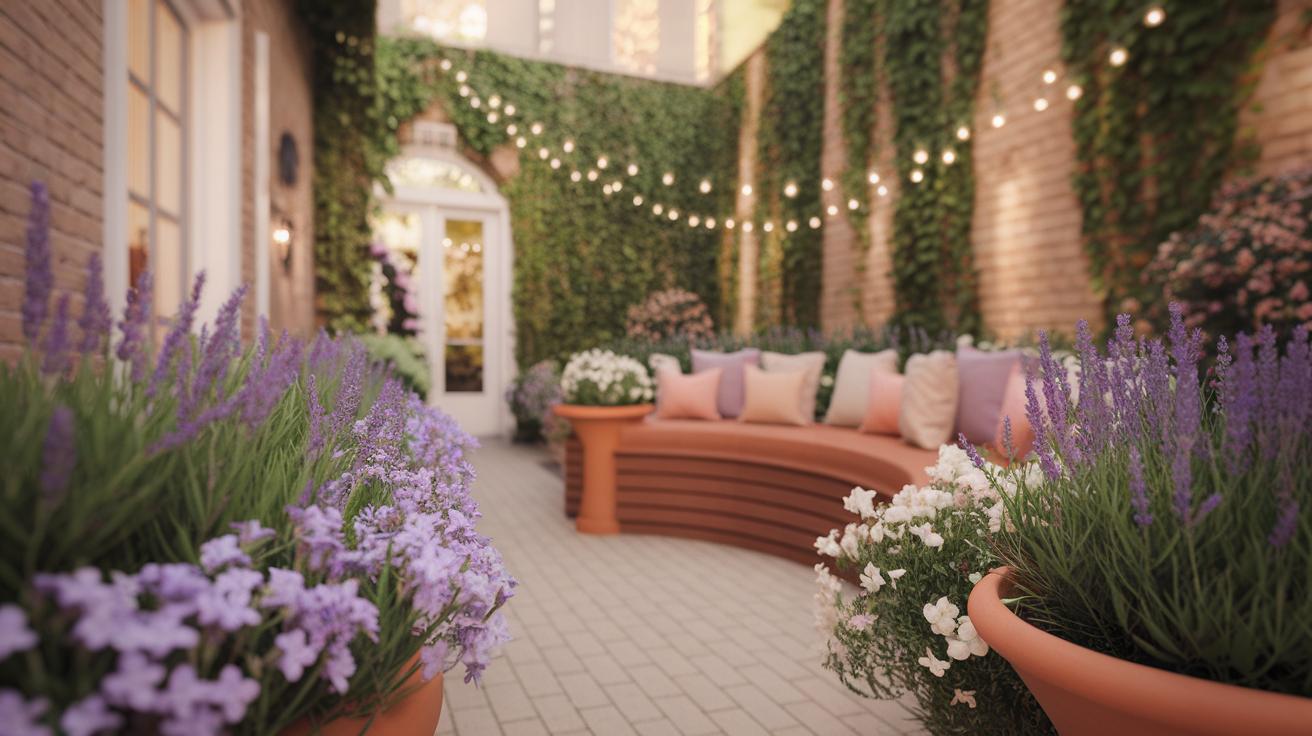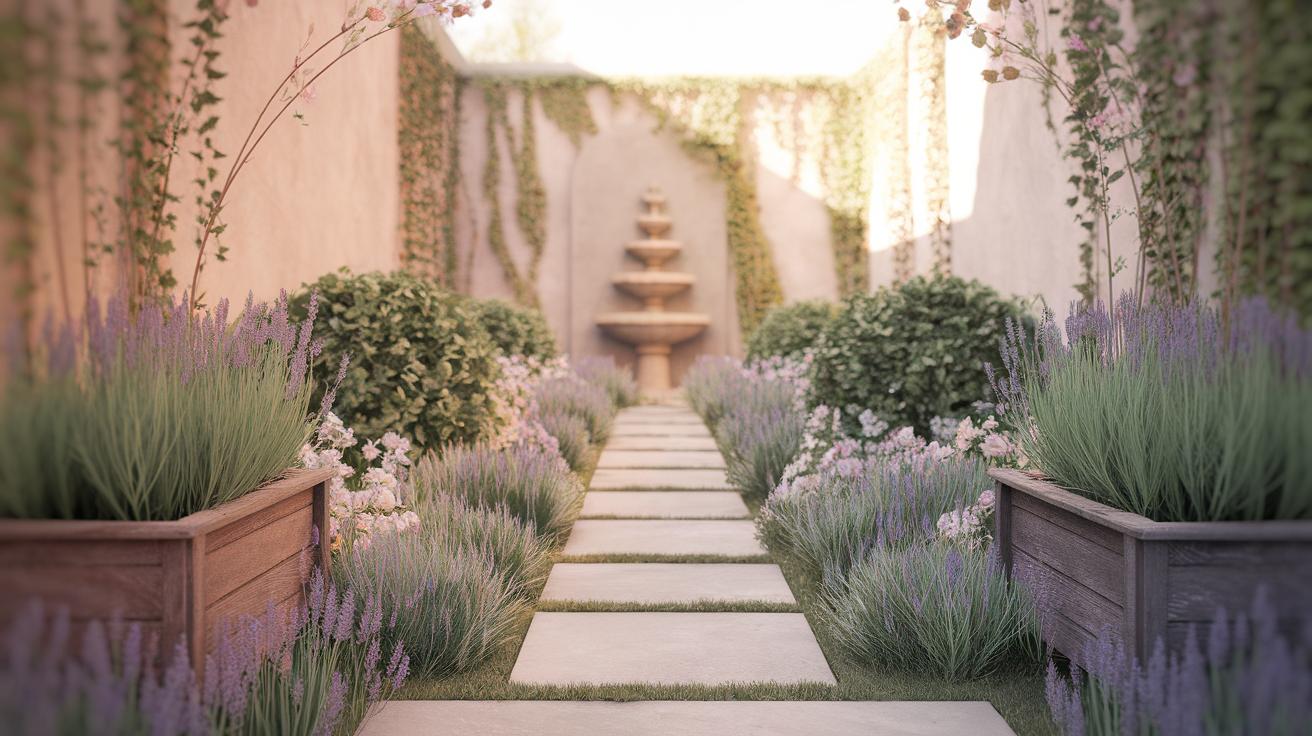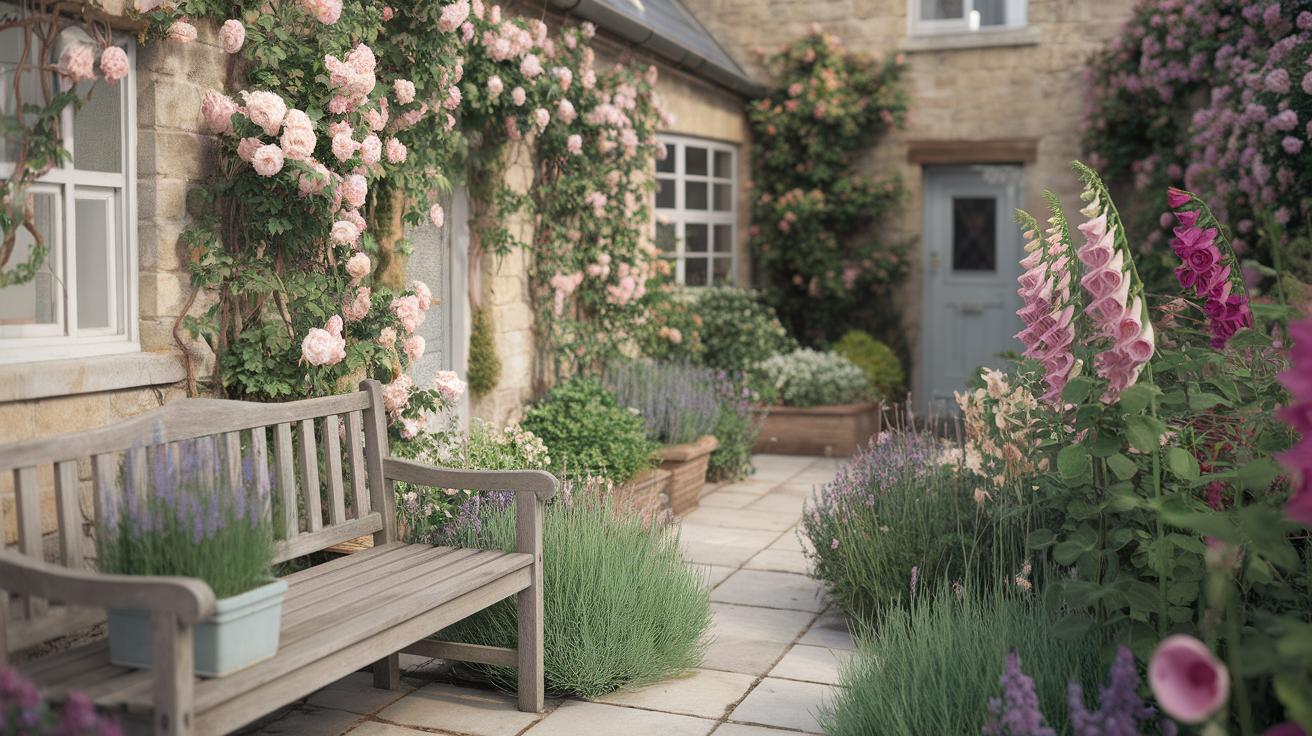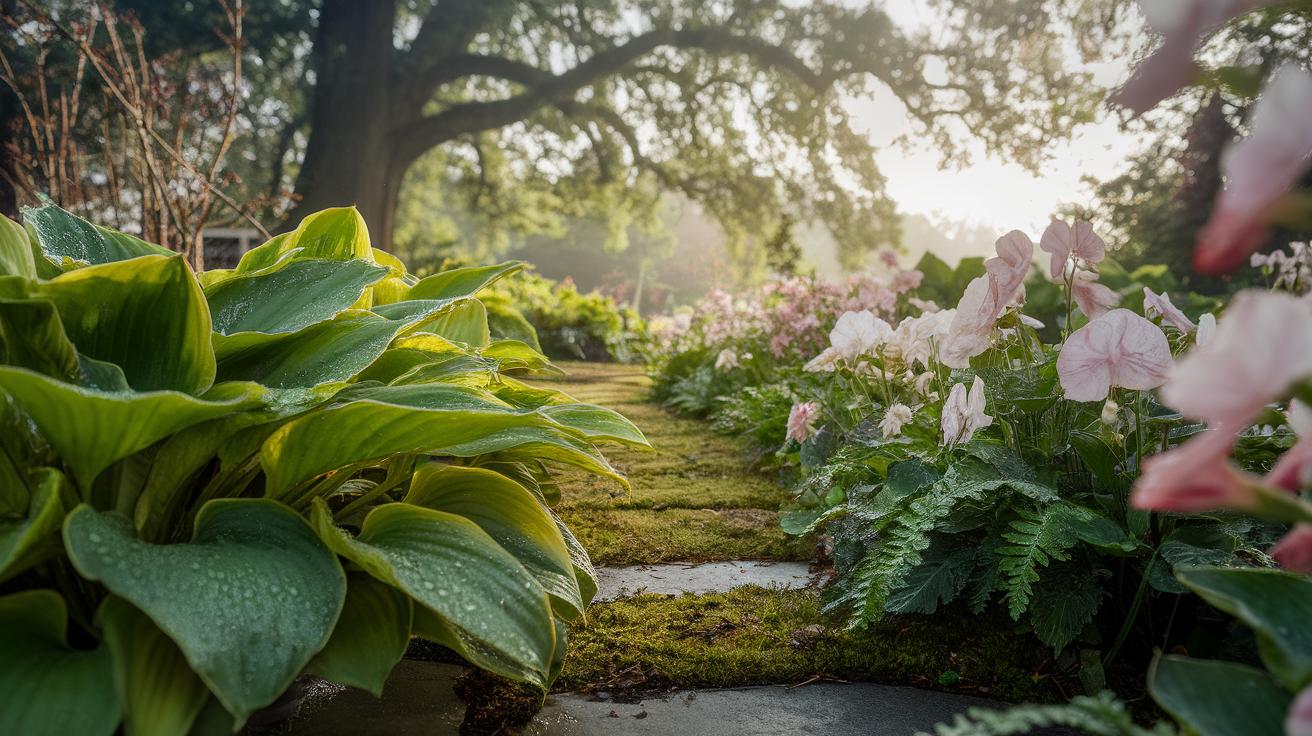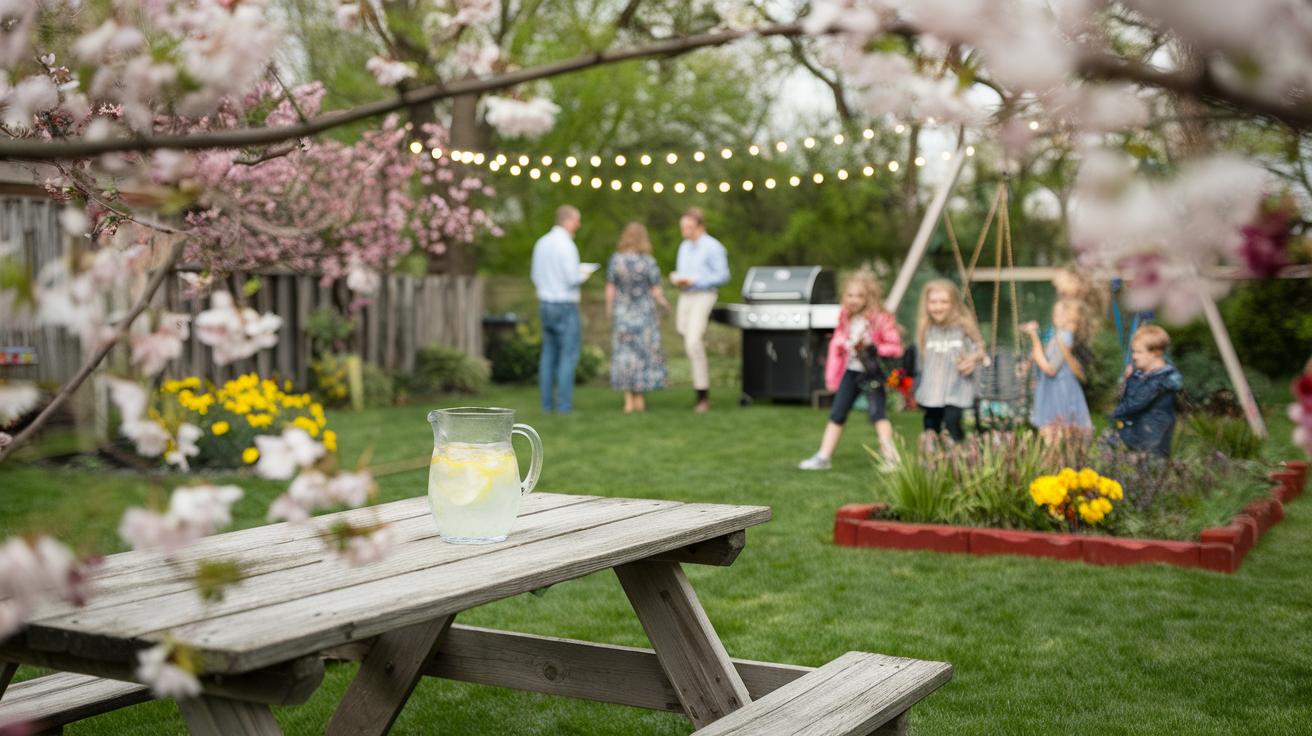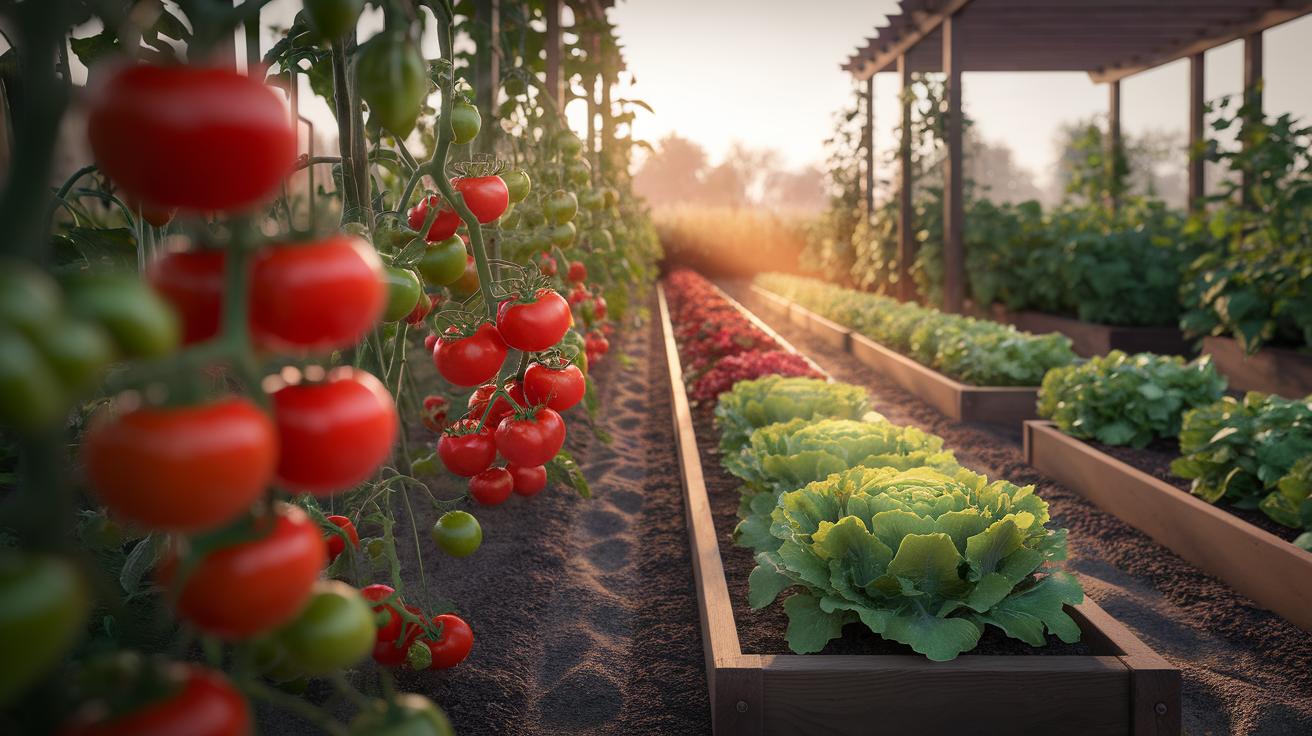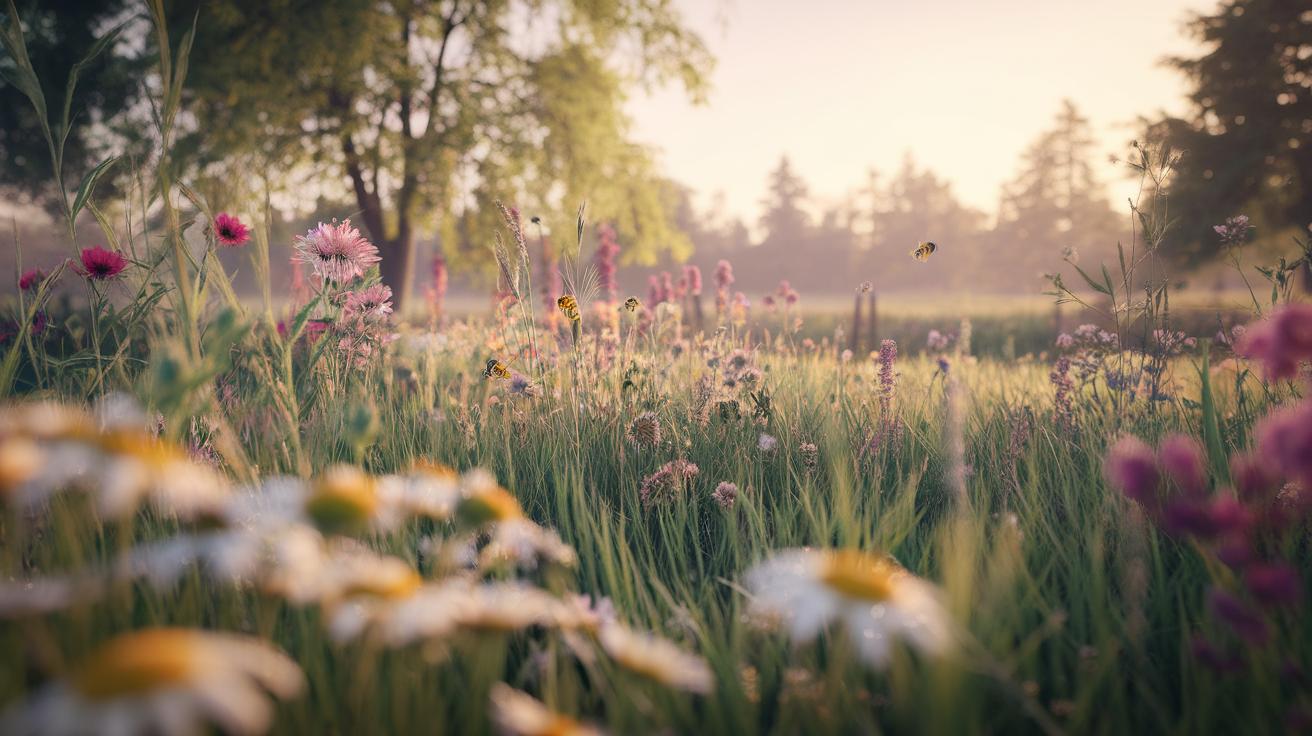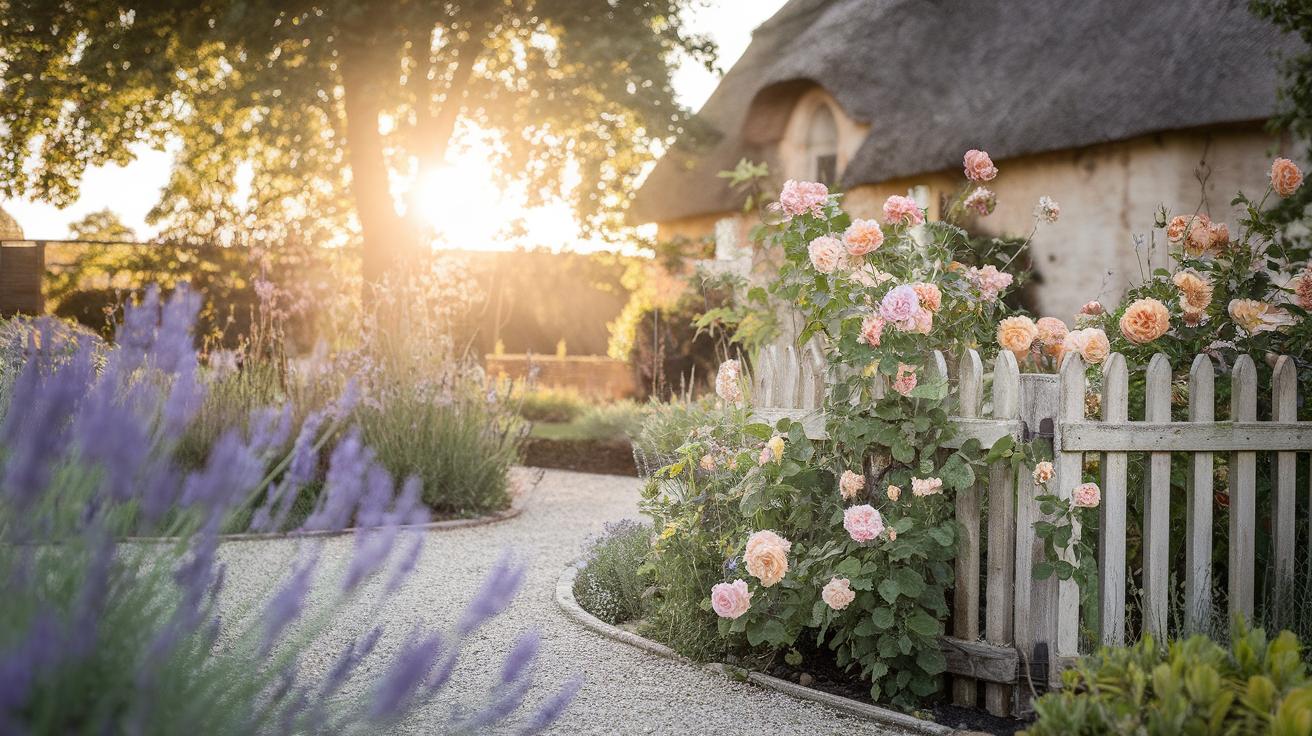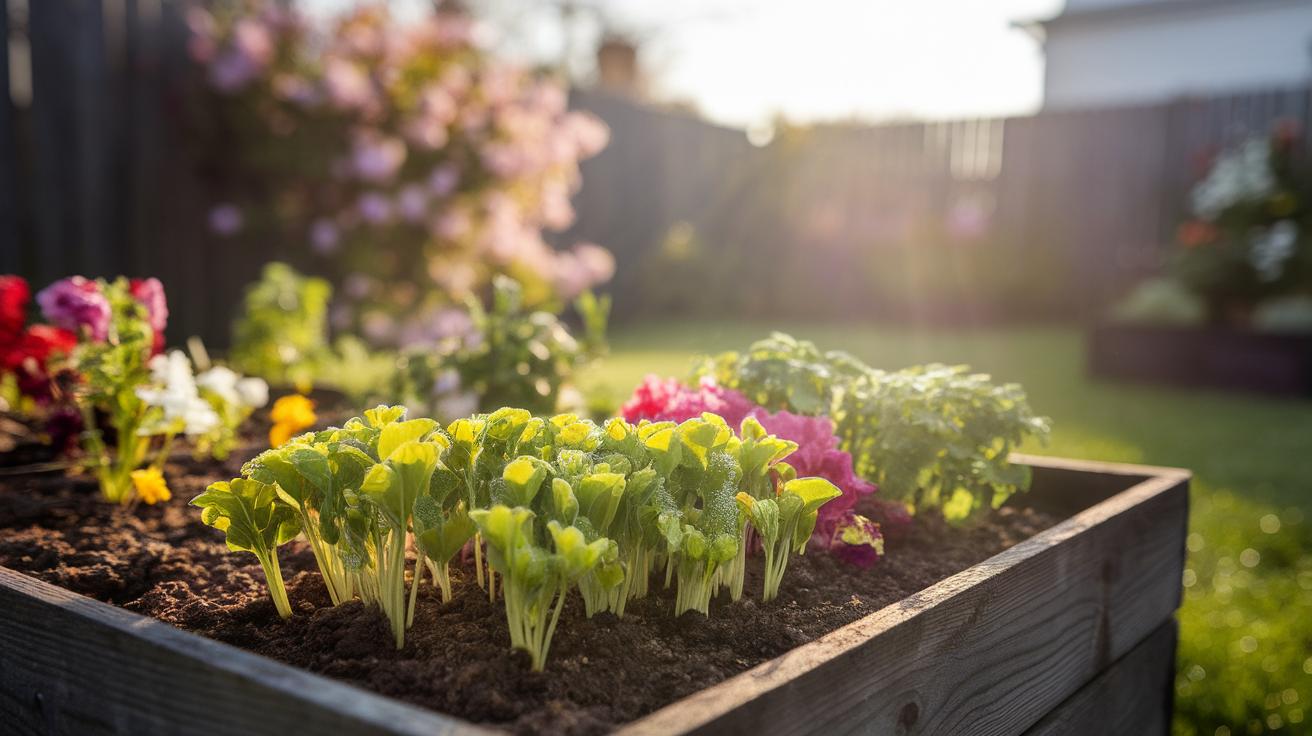Introduction
Small courtyard gardens offer a unique chance to create a peaceful retreat right at your doorstep. These compact spaces serve as perfect spots for relaxation, providing a quiet break from the busy world outside. The charm lies in their manageable size and the ability to transform them into lush, inviting areas. Anyone can design such a garden to fit their needs and tastes, regardless of outdoor space limitations.
Planning a small courtyard garden involves thoughtful design and a mix of practical elements. You will consider plants, seating, lighting, and layout to make the best use of the area. This article guides you through steps and ideas to build a refreshing courtyard, a place where you can unwind, entertain guests, or simply enjoy nature in your home environment.
Understanding The Benefits Of Small Courtyard Gardens
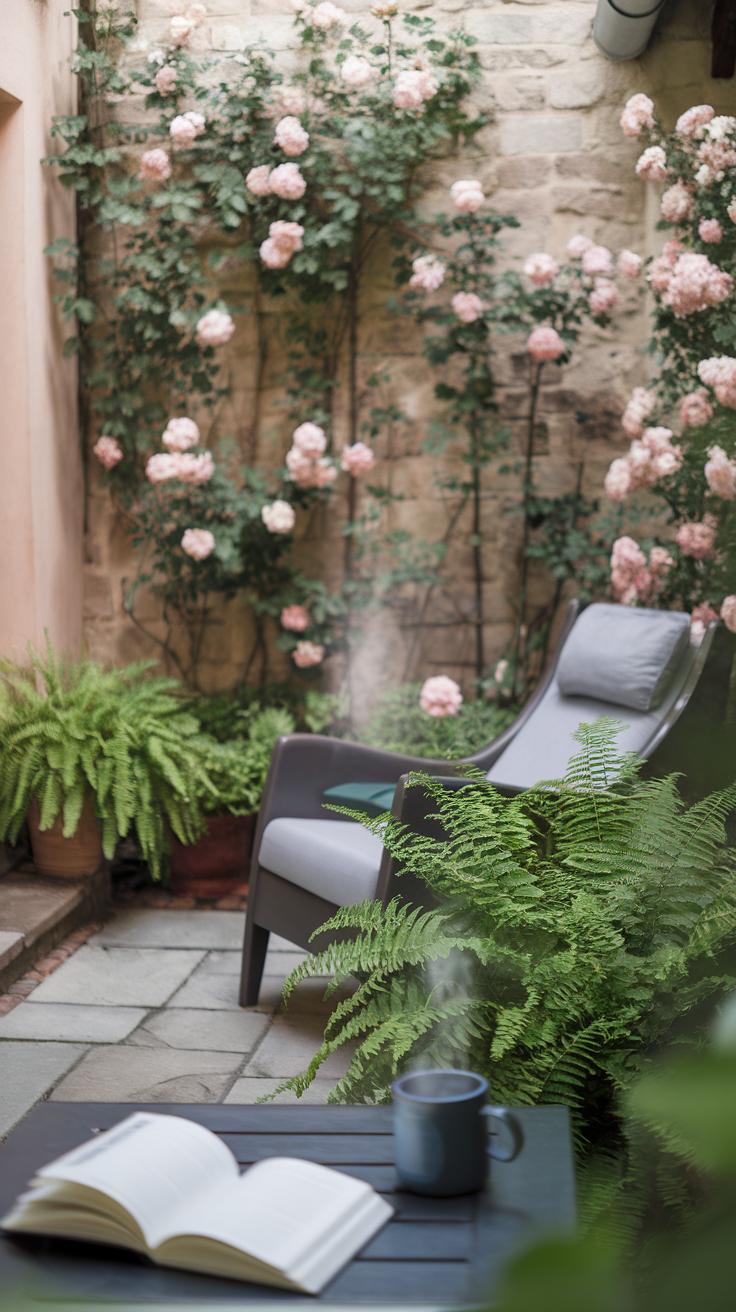
Small courtyard gardens offer a unique way to bring calm and beauty right outside your door. They improve your home environment by creating a peaceful spot that is easy to access. Having a green space close to where you live means you don’t need to travel far to enjoy fresh air and nature.
Privacy stands out as a key benefit. Unlike open yards, courtyards are often enclosed by walls or buildings, giving you a quiet retreat shielded from neighbors and street noise. This makes it easier to relax without distractions.
Another advantage is convenience. Stepping outside to a well-designed courtyard takes only seconds, encouraging daily moments of calm. This can boost your mood and help you reset during busy days.
How often do you find yourself wishing for a calm space to unwind near your home? Small courtyard gardens can fill that need while improving your living area with natural beauty and fresh air.
Privacy And Comfort At Your Doorstep
Your courtyard garden acts as a personal outdoor room. Enclosed by walls or fences, it keeps prying eyes away so you can feel safe and relaxed. This sense of privacy allows you to use the space for quiet reading, meditation, or simply enjoying nature in comfort.
With privacy, you can arrange furniture or decorations to suit your style without worrying about how others see it. This freedom makes the space more inviting and encourages you to spend more time outside.
Have you noticed how public spaces often limit comfort because of lack of privacy? Your courtyard lets you enjoy outdoor comforts without interruptions, right next to your home.
Mental Health And Well-being Enhancement
Spending time near plants and natural elements has clear effects on mental health. Regular interaction with a courtyard garden can lower stress levels and improve your mood. Just looking at greenery helps calm your mind and reduce anxiety.
Daily access to a garden encourages short breaks throughout the day. These little pauses support mental clarity, focus, and relaxation. Over time, these benefits add up, contributing to better emotional balance.
Does your daily routine allow time to step outside and breathe? Creating a small courtyard garden encourages healthy habits that support your well-being by connecting you regularly with nature.
Planning Your Small Courtyard Garden Layout
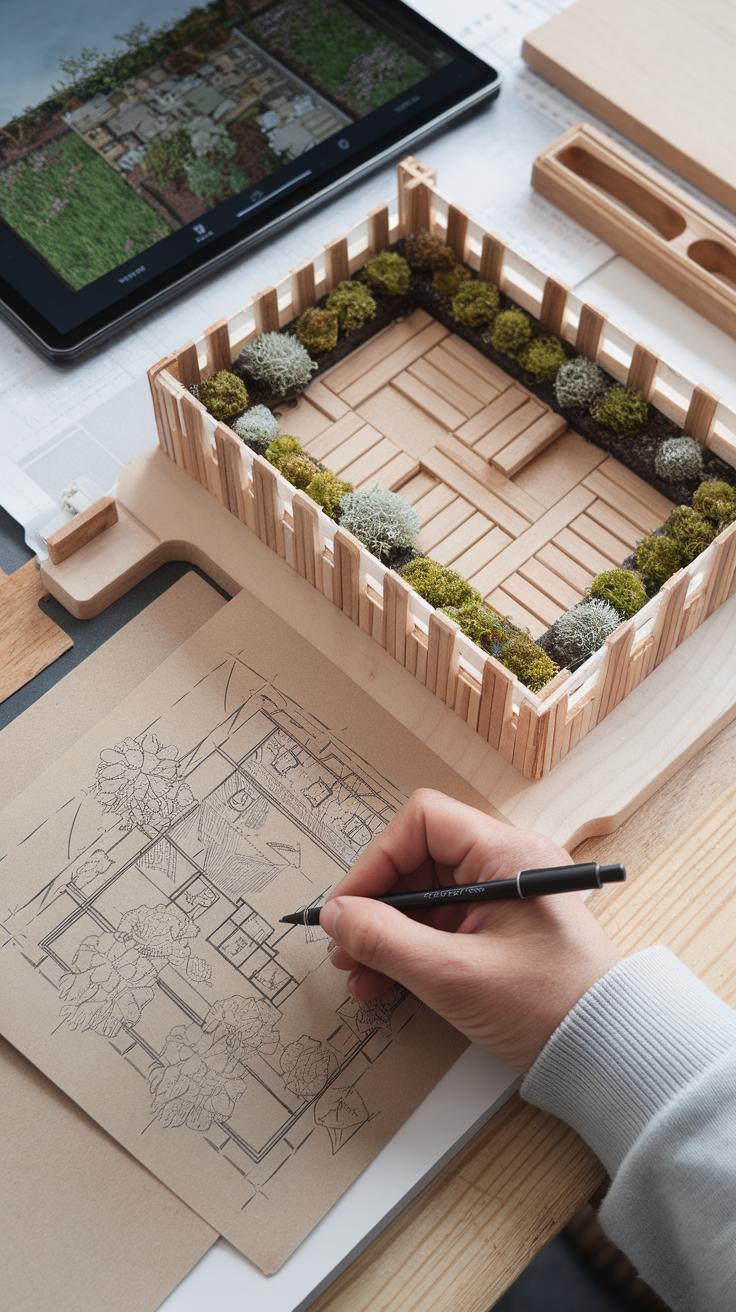
Measuring And Mapping The Area
Start by measuring the length and width of your courtyard using a tape measure. Write down all measurements, including doorways, windows, and any fixed features like drains or walls. Note the height of surrounding walls or fences too, as these affect plant choices and sunlight.
Create a simple sketch on graph paper or use a digital tool to draw your courtyard’s shape to scale. Mark existing elements and any areas that get sunlight or shade at different times of day. This map helps you see unused spaces and imagine how furniture or plants might fit.
Ask yourself: Where is the best spot for seating? Is there enough room for pathways? Will you want room to move freely? Taking time here makes the design process clearer and prevents costly mistakes.
Choosing And Positioning Focal Points
Choose one or two features to act as focal points for your courtyard. A water fountain, a small sculpture, or a vibrant plant can guide the eye and give your garden character. Decide what you want visitors or yourself to notice first when entering.
Place focal points where they can be seen easily, such as near a seating area or at the end of a path. Avoid overcrowding; each focal point should have space around it to stand out. You can also use grouping—like a cluster of potted plants or a grouping of stones—to build a natural focus.
Think about how people will move through the space. Does the focal point invite you to stop and relax? Can you enjoy it from different angles? Positioning with intention supports peaceful moments and keeps your courtyard feeling open despite its size.
Selecting Plants Suitable For Small Courtyard Gardens
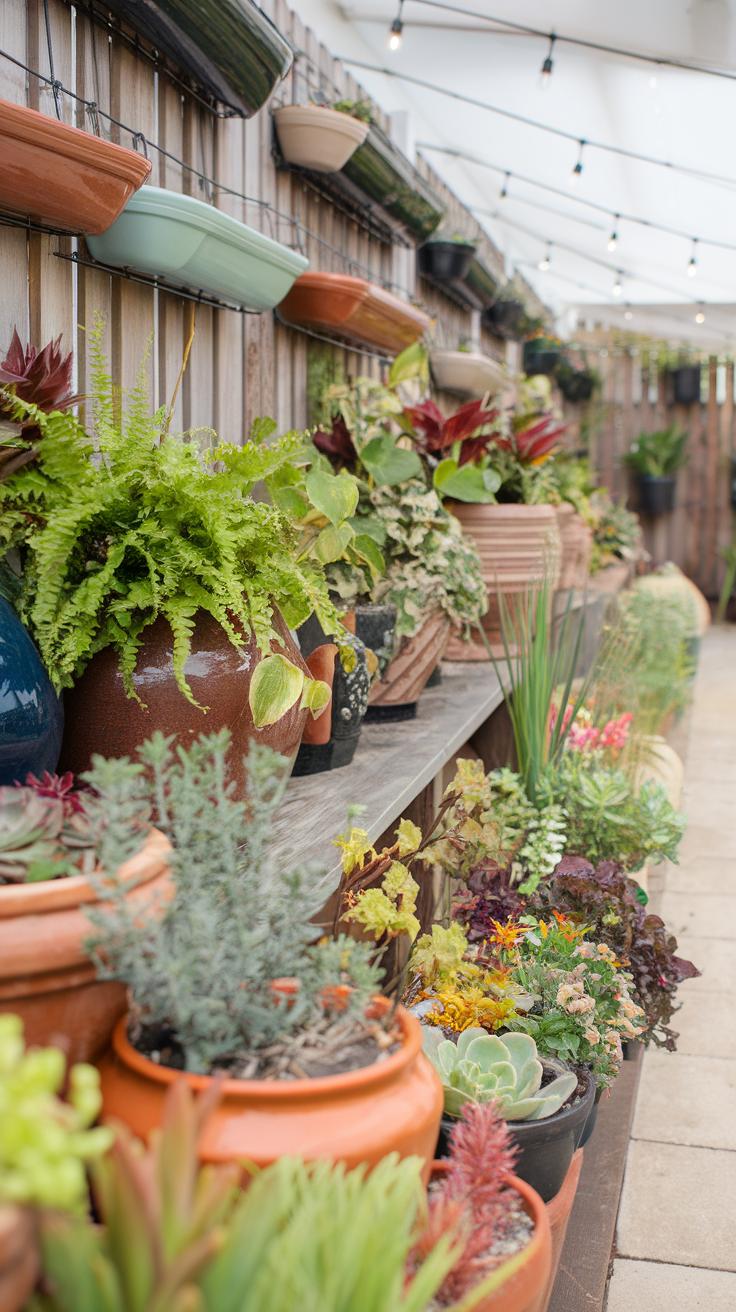
Choosing the right plants helps your courtyard feel peaceful and inviting without overcrowding the space. Focus on greenery that fits the size of your garden and suits your care routine. Low-maintenance plants save time and reduce stress while still offering natural beauty.
Consider plants that stay small or can be trained to grow upward rather than outward. Think about the light in your courtyard before picking plants. Each plant has a unique need for sun or shade, so matching them with your courtyard’s conditions ensures they grow well and stay healthy.
Ask yourself: How much time will you spend caring for your garden? Do you want to see flowers throughout the year, or is easy greenery enough? These questions guide your choices toward plants that support a calm and restful outdoor space.
Plants That Thrive In Limited Space
Small courtyards benefit from plants that fit tight spaces without losing charm. Compact shrubs like boxwood or dwarf laurels offer structure and green year-round. Their size keeps your courtyard open and breathable.
Vertical climbers use walls or trellises to grow up, not out. Clematis, jasmine, or star jasmine bring height and scent without taking floor space. These plants add layers and interest to your garden’s design.
Dwarf trees are a great focal point. Japanese maple or dwarf citrus trees stay small but provide shade and color. Their manageable size suits containers or small soil patches, giving your courtyard character without crowding.
Choosing Plants For Different Light Conditions
Knowing your courtyard’s light zone guides plant selection to match what thrives best. Full sun areas can handle sun lovers like lavender, rosemary, and succulents. These plants show resilience and add texture to sunny spots.
For partial shade, plants like ferns, hydrangeas, and impatiens work well. They adapt to less intense light and bring lushness without drying out. This balance helps keep the garden vibrant even where sun is limited.
Full shade zones are ideal for hostas, ivy, and caladiums. These plants prefer low light and can fill corners or under tall trees with deep green leaves and soft blooms. Matching plants to light avoids struggling growth and disappointment.
Which light conditions dominate your courtyard? Matching plants to those spots lets you create a garden that grows naturally and feels restful throughout the day.
Incorporating Seating And Comfort Elements
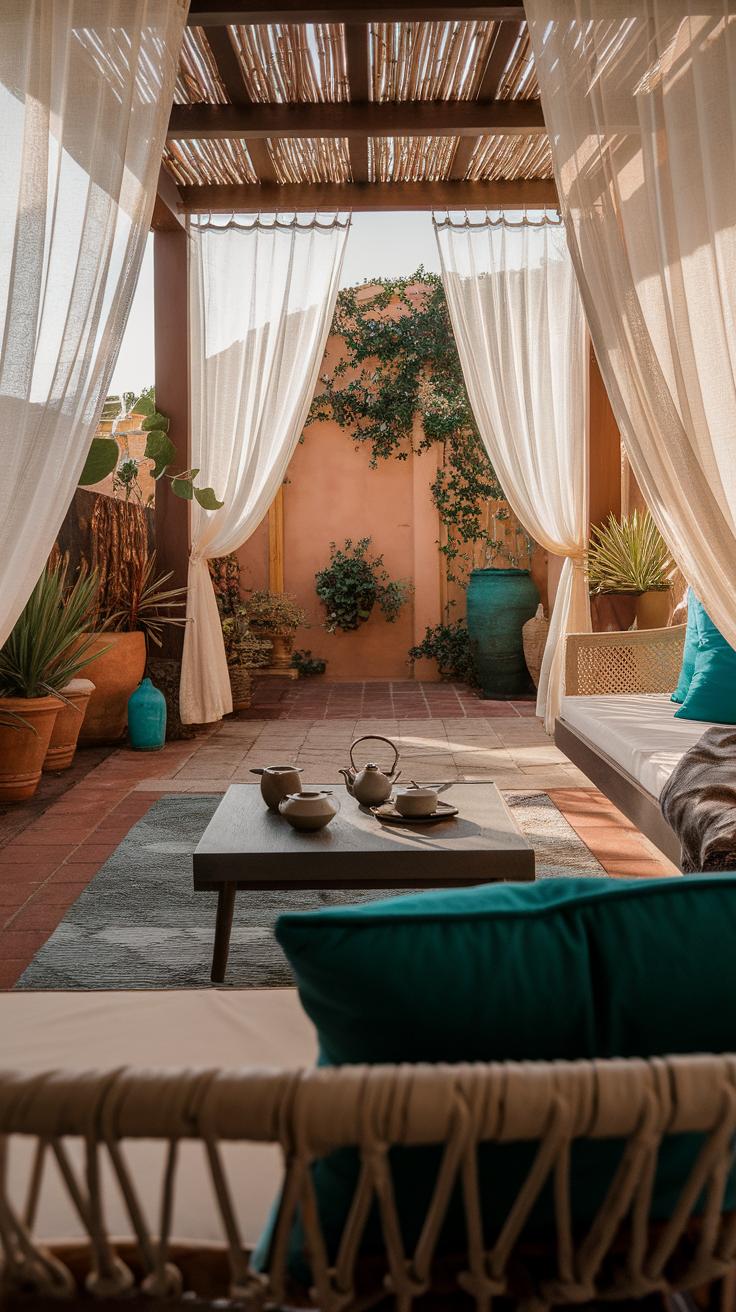
Choosing the right seating in your small courtyard garden shapes how often and how comfortably you use the space. Benches offer sturdy seating without taking up much room. Consider a bench with built-in storage underneath to keep cushions or garden tools within reach.
Foldable chairs let you clear space when needed and bring seating out during gatherings or quiet moments. Lightweight metal or wood frames work well for this flexibility. Built-in seating, such as stone or wooden ledges along walls, fits naturally into small spaces without crowding. These options invite you to sit back and relax while blending into your garden’s design.
Think about how often you use the space and how many people typically join you. Would a simple bench serve your daily needs, or do foldable chairs offer the adaptability you want? Your seating choices can make your courtyard feel more inviting and functional, encouraging longer, more frequent visits.
Space-Saving Seating Options
Space in a small courtyard garden is limited, but clever seating choices make a big difference. Multi-purpose furniture, like a bench doubling as a planter stand, maximizes every inch. Stackable stools tuck neatly away, freeing open floor areas for movement.
Fold-away designs let you store seating inside or hang chairs on a hook when not in use. Narrow benches fit snugly along walls or under windows without reducing walkways. Modular seating lets you rearrange pieces based on your needs, providing flexibility without clutter.
Ask yourself: How can your seating do more than just support sitting? Could it store items or act as a decorative element? Thinking beyond traditional seats opens up many options to keep your courtyard practical and cozy.
Enhancing Comfort With Cushions And Accessories
Cushions and throws make seating more inviting and encourage you to stay longer. Choose weather-resistant fabrics that are easy to clean and add color or texture to your courtyard. Thick cushions soften hard benches, while smaller pillows provide lumbar support.
Accessories like outdoor rugs create a cozy ground area and define separate seating zones. A waterproof throw offers warmth during cool evenings, extending your garden’s usability. Consider small side tables or trays to hold drinks, books, or plants nearby.
Think about your personal comfort needs when selecting accessories. What colors or materials make you feel relaxed? These additions personalize your courtyard, making it a place where you want to unwind regularly.
Using Lighting To Set The Mood
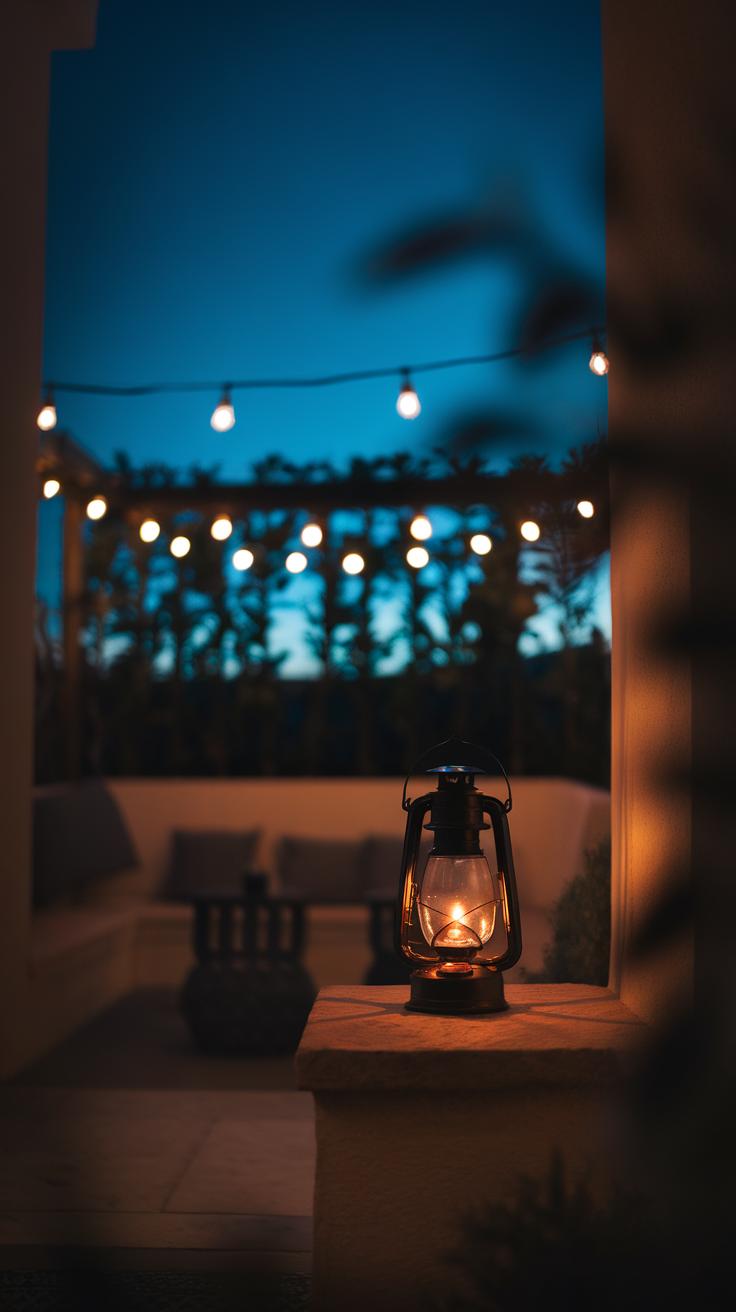
Lighting plays a key role in making a small courtyard garden feel welcoming after the sun sets. You can use soft, warm lights that invite you to unwind and enjoy the space in the evenings. Choose lighting that won’t overpower the area but adds gentle illumination instead. Think about layers of light—combine different sources to create depth and comfort.
Using dimmable lights gives you control over the brightness, adjusting the mood as you need. You might want just a subtle glow for reading or brighter light for social gatherings. Avoid harsh, bright lights that can make the courtyard feel cold or uninviting.
Try mixing fixed lighting with portable options. For example, place a few lanterns near a seating area and use string lights overhead to make the space feel cozy and clear. These small touches keep your courtyard flexible and charming at night.
Types Of Lighting Suitable For Small Gardens
Solar lights provide an easy, energy-saving way to add light without wiring. They charge during the day and turn on automatically at night, perfect for low-maintenance setups. You can place solar stake lights along pathways or flower beds.
String lights create a soft, scattered glow. You can hang them overhead or wrap them around railings to give your courtyard a delicate twinkle. They come in many styles, from globe bulbs to tiny LED strands.
Lanterns offer portable lighting you can move as needed. Whether hung from hooks or set on tables, lanterns bring warmth and can use candles, batteries, or solar power. Pick lanterns that suit your garden’s size so they don’t clutter the space.
Placement Techniques To Highlight Features
Place lights where they draw attention to your courtyard’s best spots. Use small spotlight fixtures to brighten a favorite plant or sculpture. Lighting these areas makes your garden feel alive after dark.
Line paths with low, soft lights to guide the way safely without glare. Keep the bulbs hidden behind plants or edging to create light pools along walkways. This adds a sense of direction and calm.
Position lanterns or string lights near seating zones to create cozy pockets for conversation or relaxation. Avoid placing bright lights directly overhead to prevent discomfort. Instead, aim for lighting that gently surrounds the area.
Consider how shadows fall in the evening. Placing lights at different heights and angles helps add variety and magic to your small courtyard garden’s night-time look. Could shifting just one light change the feel of your whole space?
Integrating Water Features For Relaxation
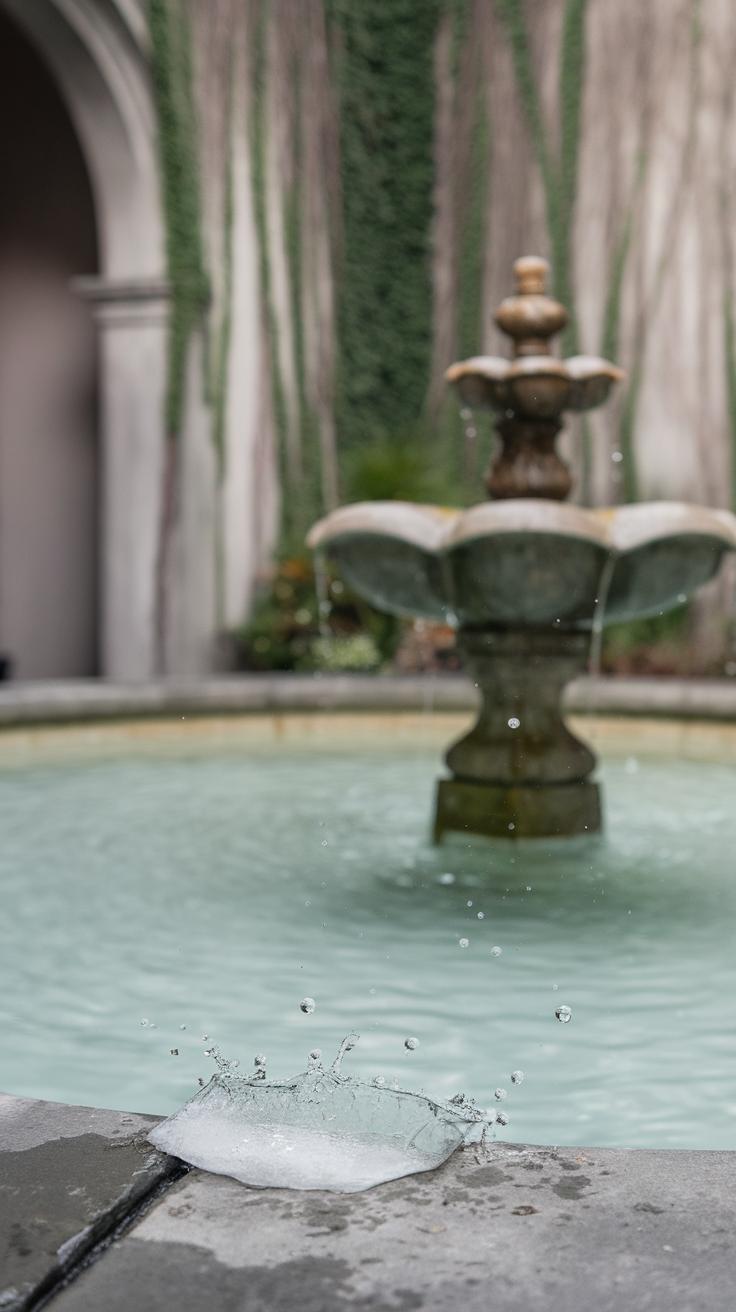
Water features bring a natural sense of calm to your small courtyard garden. The gentle sound of flowing water helps your mind unwind and shifts focus away from daily stress. A fountain, birdbath, or small pond creates a peaceful atmosphere without taking up much space. You might choose a tabletop fountain or a miniature pond that fits in a corner. These options won’t crowd your courtyard but still offer the soothing presence of water.
Have you noticed how water features attract birds and butterflies? This adds life and movement to your garden, deepening your connection to nature. Even during busy days, a simple water element can help you slow down and enjoy quiet moments outdoors. What type of water feature would fit your space while offering you calm?
Small Water Features That Fit Anywhere
Consider compact fountains designed for small spaces. Some fit on a tabletop, powered by quiet pumps that recycle water. Wall-mounted fountains take up no floor space, using vertical surfaces effectively. Birdbaths on pedestals fit easily in corners and invite wildlife. Small ponds need minimal area and can hold aquatic plants to enhance beauty and serenity.
Portable options allow flexibility. You can move them as you rearrange your courtyard or change seasons. Choosing models with easy-to-clean designs keeps maintenance low. When space is limited, these practical water features change how you experience your outdoor area without overwhelming it.
Benefits Of Water Sounds And Movement
The sound of trickling water helps mask unwanted noises from traffic or neighbors. This creates a private, tranquil environment. Water’s gentle movement calms your mind and invites meditative thinking. Quiet, rhythmic sounds reduce tension and improve mood, making your courtyard a reliable space for relaxation.
Water movement also keeps the air fresh and humidified around your garden. This can improve comfort during dry or hot days. Do you find soft background sounds help you focus or unwind after a long day? Adding a water feature in your courtyard might be the simple change you need.
Maximizing Privacy In Your Courtyard Garden
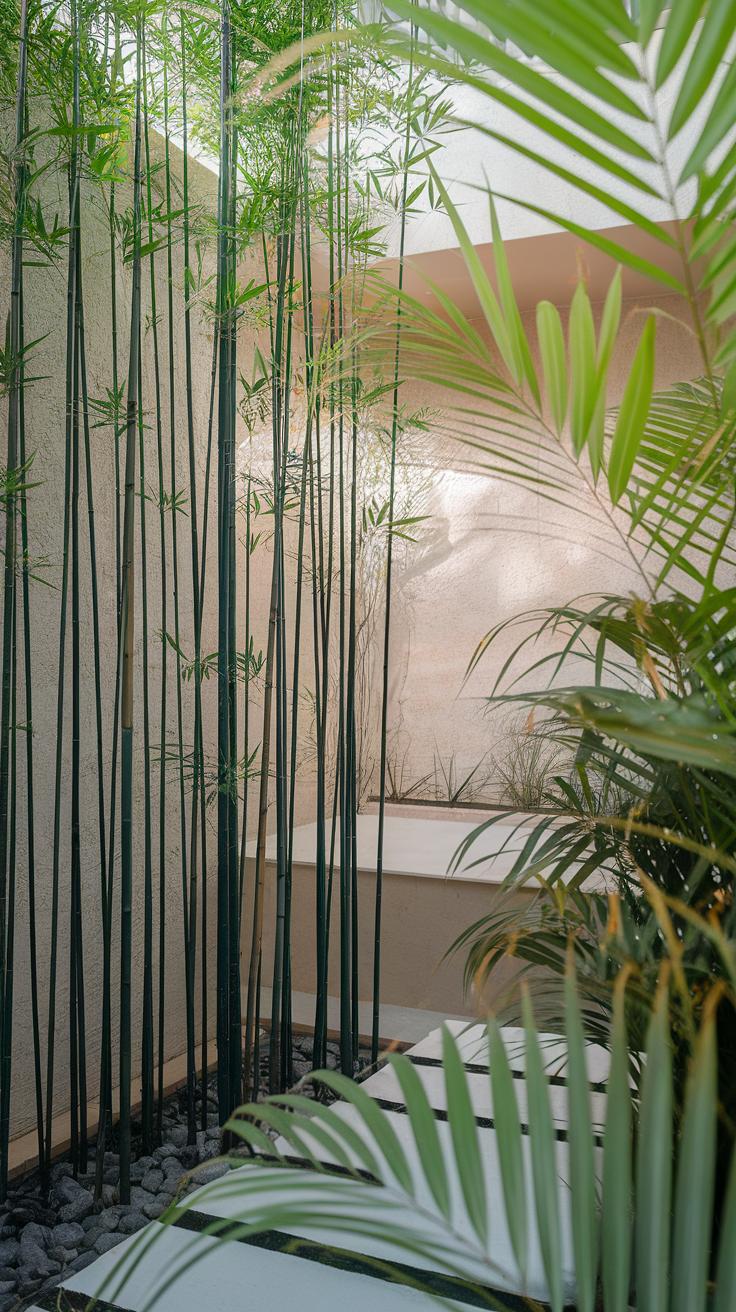
Creating privacy in a small courtyard garden makes it easier to relax without distractions. You want a space where you feel safe and undisturbed. Using screens, plants, and structural elements can block unwanted views while keeping your garden bright and inviting.
Think about how each element affects sunlight and airflow. For example, a tall fence might block neighbors’ views but could also make the courtyard darker. Combining screens with plants softens this effect. Plants filter light naturally and add a calming, green layer.
Consider your courtyard’s layout before installing privacy features. Can you place taller screens along property lines where neighbors look in? Or add climbing plants that can grow up lattice panels? Your goal is to guard your space without making it feel closed off.
How would you balance privacy and openness to create a personal retreat? Experiment with different ideas until you find what feels comfortable for your daily use.
Using Plants As Natural Screens
Plants offer a natural way to boost privacy in a courtyard garden while adding life and color. Fast-growing shrubs like privet or boxwood form dense walls in just a few seasons. Bamboo grows quickly and stands tall, but choose clumping varieties to control spreading.
Tall grasses such as pampas grass or miscanthus create soft, moving screens that block views without heavy visual barriers. These plants sway with the breeze and provide gentle sound buffers, making your courtyard quieter.
Plant in clusters or rows to form effective barriers. Place them along edges where you need privacy most. Ask yourself which plants fit your light and climate conditions, so your screens grow healthy and strong.
Structural Elements To Block Views
Trellises, lattice panels, and fences offer strong, adjustable options to increase privacy. These structures can support climbing plants or stand alone to create separation. Choose lattice designs with openings large enough to let light through but small enough to block views.
Wood or metal trellises provide vertical interest without casting dense shadows. Position them near seating areas or paths where privacy matters most. You might also use partial fences that reach halfway up, paired with tall plants on top for layered coverage.
Think about how each element fits your courtyard’s style and size. Can you reuse existing fences and add trellis panels above? Which locations need screens, and where can you leave space open? Designing this way keeps your garden comfortable and bright while keeping prying eyes out.
Maintaining Your Courtyard Garden With Ease
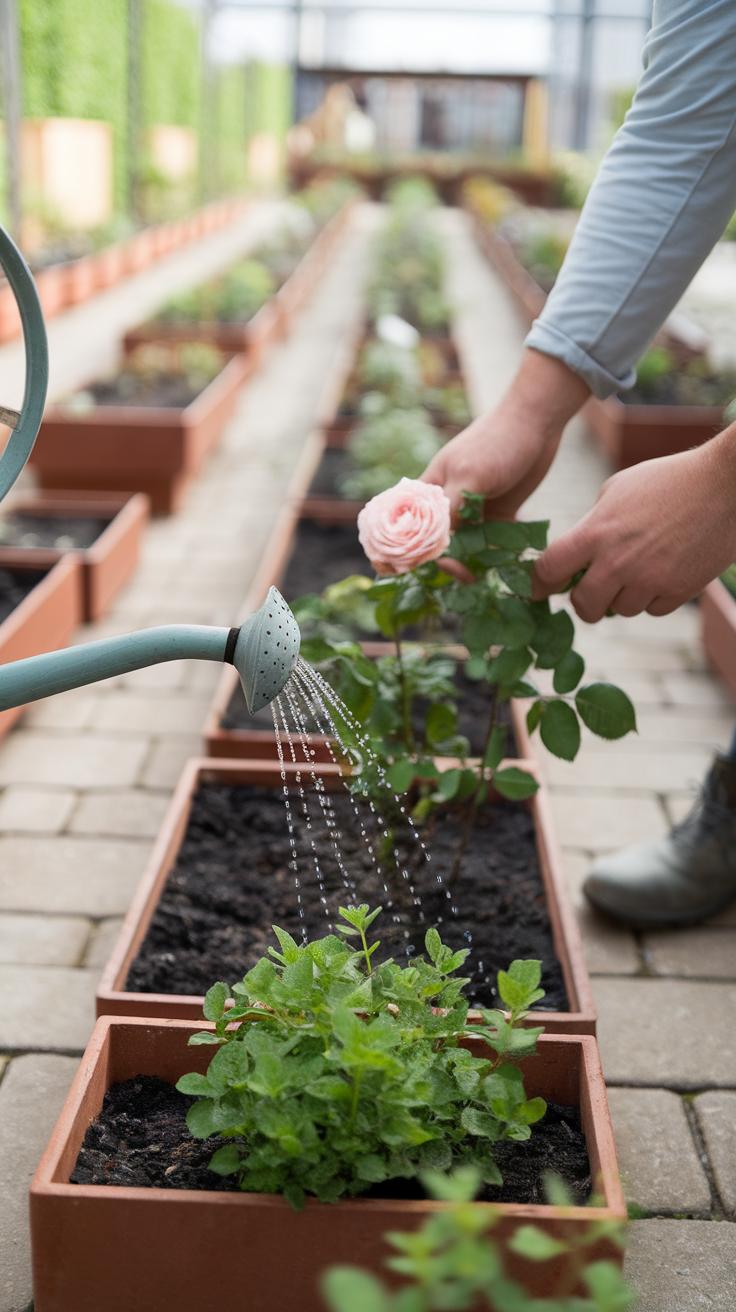
Keeping a small courtyard garden looking its best does not have to take much time or effort. Focus on simple, regular tasks that prevent problems before they start.
Pay attention to watering by setting up a routine that fits your schedule. Check the soil moisture rather than watering blindly to avoid overwatering or underwatering. A consistent approach keeps plants thriving without wasting water or your time.
Clear dead leaves and spent flowers regularly to reduce pests and disease risks. This also keeps your garden tidy and inviting. Plan seasonal clean-ups to remove old growth and prepare your plants for new cycles. Doing these tasks in small steps over time saves work later.
Ask yourself what parts of daily or weekly garden care you can simplify. Could some tasks be automated or combined? When you design your watering and pruning habits around efficiency, your courtyard stays healthy with minimal effort.
Efficient Watering Techniques
Drip irrigation is a smart choice for small courtyard gardens. It delivers water directly to plant roots, reducing waste and making watering faster. You can connect drip lines to a timer to water while you’re away or busy.
Self-watering containers work well if you have limited plants or mixed containers. These pots hold a water reservoir that feeds plants as needed, cutting down on daily watering.
Choose watering times carefully. Early mornings or late evenings help reduce evaporation. Water slowly and deeply to encourage strong root growth. How often you water depends on plant types and weather, but steady, precise watering beats frequent, shallow watering.
Pruning And Seasonal Care
Pruning keeps your plants healthy and looking good without complexity. Start by removing dead or damaged stems to prevent disease spread. Trim leggy growth to maintain shape and encourage fullness.
Use clean, sharp tools for clean cuts that heal quickly. For flowering plants, prune after blooms fade to prepare them for next season’s growth. For evergreens and shrubs, prune lightly throughout the year rather than heavy cuts all at once.
Seasonal clean-up means clearing fallen leaves and old plant material. Removing debris in spring and fall helps prevent pests and keeps air flowing around plants. Have you found the best times and methods for pruning in your courtyard to fit your lifestyle?
Personalizing Your Courtyard Garden Design
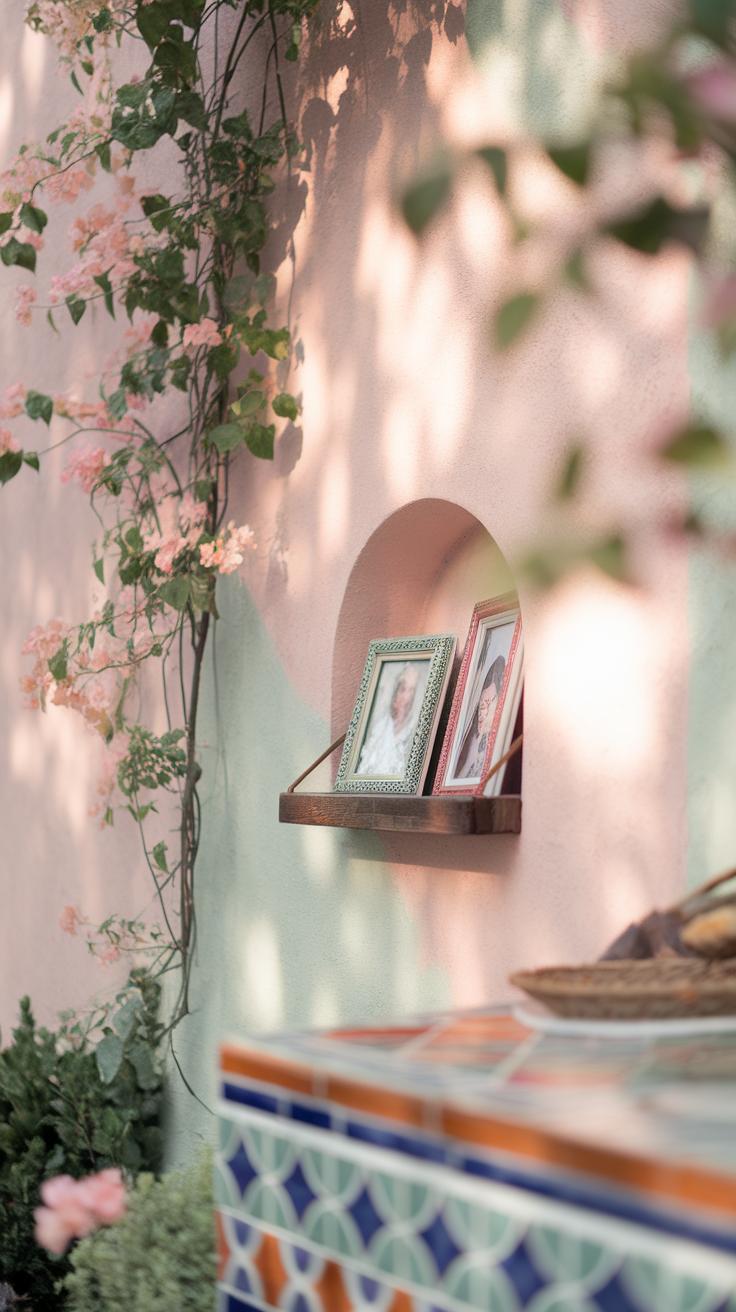
Creating a small courtyard garden that feels like your own peaceful retreat starts with adding personal touches. Think about what colors and patterns speak to you. Are you drawn to bright, bold hues or soft, calming shades? Using these colors in pots, cushions, or outdoor rugs makes your space inviting and unique.
Decor elements give your courtyard character. Pick garden art or ornaments that tell your story. These could be handmade ceramics, wind chimes, or metal sculptures. Choose cushions and throws that add comfort and style to seating areas. Don’t hesitate to mix textures and materials to reflect what you love.
Choosing a theme guides your design choices and keeps your courtyard cohesive. Do you prefer modern minimalism with clean lines and simple shapes? Or does rustic charm with wood, stone, and vintage pieces feel more like you? Maybe a tropical oasis with lush plants and natural fibers suits your daily escape. Select one theme and match plants, furniture, and decor to keep the look consistent. What feeling do you want your courtyard to create every time you step outside?
Incorporating Sustainable Practices In Your Courtyard Garden
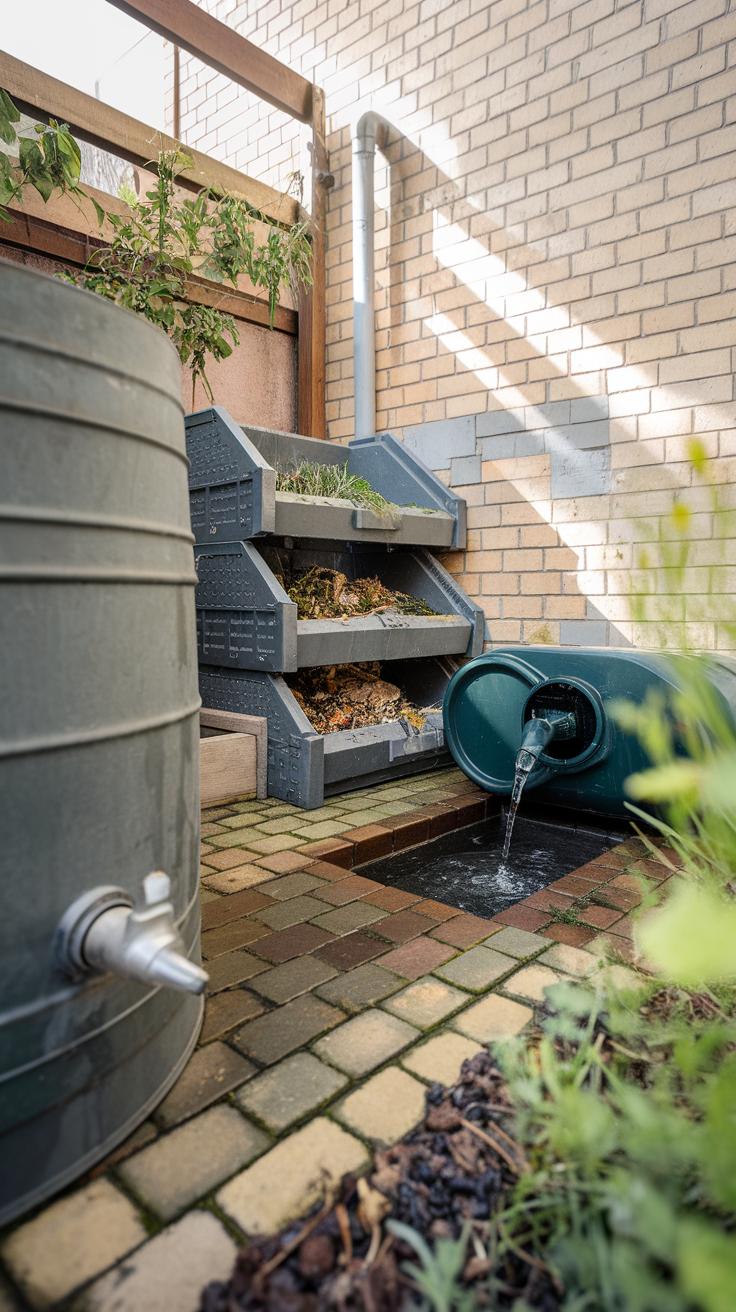
Your courtyard garden can be a space that supports the environment while offering peace and beauty. Start by using native plants that naturally fit your climate and soil. They need less water and fewer chemicals, which saves resources and time. Native plants also provide food and shelter for local birds, bees, and butterflies, helping keep your local ecosystem healthy.
Using compost made from kitchen scraps like vegetable peels or coffee grounds can enrich your soil without buying fertilizers. Compost reduces waste and recycles nutrients back into your garden, improving plant growth naturally. Collect rainwater in barrels or containers to water your plants. This practice cuts down on your water bills and reduces demand on public water systems.
Avoid chemical pesticides by using natural options such as neem oil, insecticidal soap, or introducing beneficial insects like ladybugs. These methods keep pests in check without harming your plants or the environment. How can you balance your garden’s beauty with care for the planet? Small eco-friendly steps will make your courtyard a lasting source of calm and life.
Using Native Plants For Sustainability
Native plants grow well without much extra help because they are adapted to your area’s climate and soil. They need less water, fertilizer, and care. This reduces your work and conserves water during dry seasons. Native plants also attract local wildlife you might enjoy watching, such as hummingbirds, butterflies, and bees.
Choosing native varieties can improve soil health too. Their deep roots prevent erosion and encourage soil microbes to thrive. Your garden becomes a small, balanced ecosystem. Have you explored local plant nurseries or gardening groups to learn which natives thrive nearby? Including these plants will keep your courtyard healthy and more sustainable over time.
Eco-friendly Gardening Techniques
Turning kitchen waste into compost is a simple way to reduce garbage and feed your plants. Materials like fruit peels, eggshells, and coffee grounds break down into valuable nutrients. Using a compost bin helps you recycle these scraps at home.
Harvest rainwater to lower your water use. Position rain barrels under gutters to collect runoff from rooftops. This water can irrigate your garden during dry days. It’s free and clean for plants.
Choose natural pest control instead of chemicals. Insecticidal soaps and neem oil target pests without harming beneficial insects or pollinators. Attract garden helpers like ladybugs by planting flowers like marigolds or dill. These techniques protect your garden health and promote a safe space for wildlife and people alike.
Conclusions
Small courtyard gardens provide a personal outdoor space perfect for relaxation and rejuvenation. These gardens bring nature closer to your living area and create a peaceful environment. Understanding the key design elements helps you build the courtyard that fits your needs and maximizes the limited space available. Careful planning ensures that every part of your garden serves a purpose and contributes to your comfort.
Your courtyard garden can become a favorite spot to unwind or spend quality time with family and friends. Simple additions like smart plant choices, seating, and lighting can transform it into a welcoming haven. Maintaining the garden with sustainable and practical methods keeps it thriving with less effort. When designed well, your small courtyard garden improves your home and enhances your daily life.


